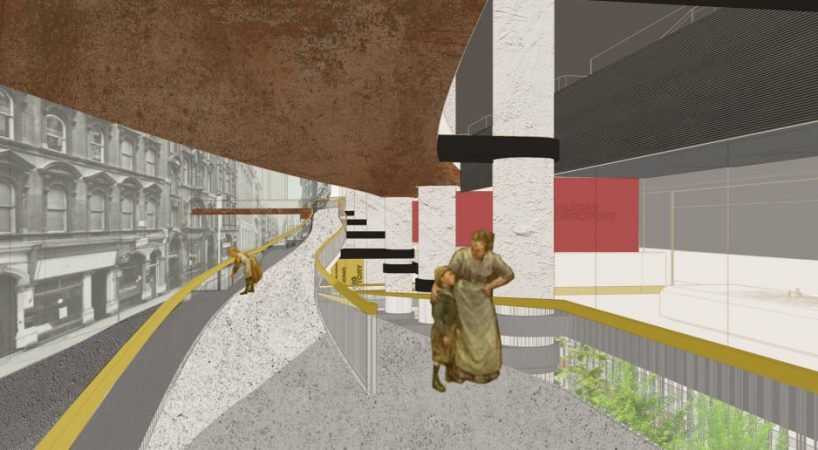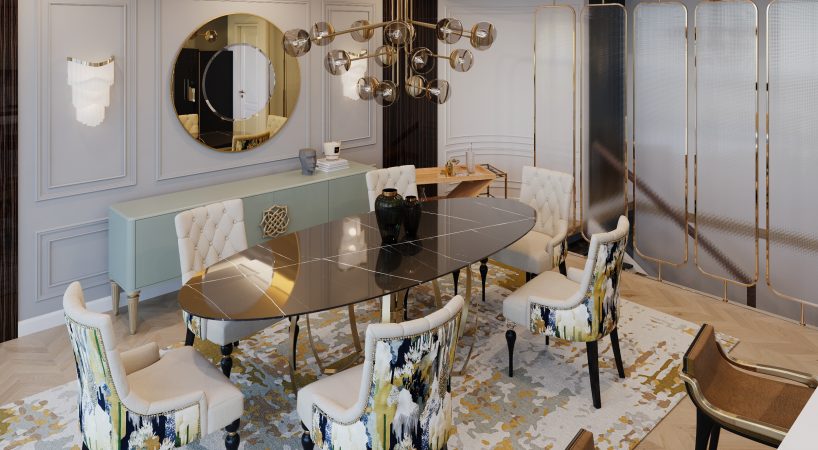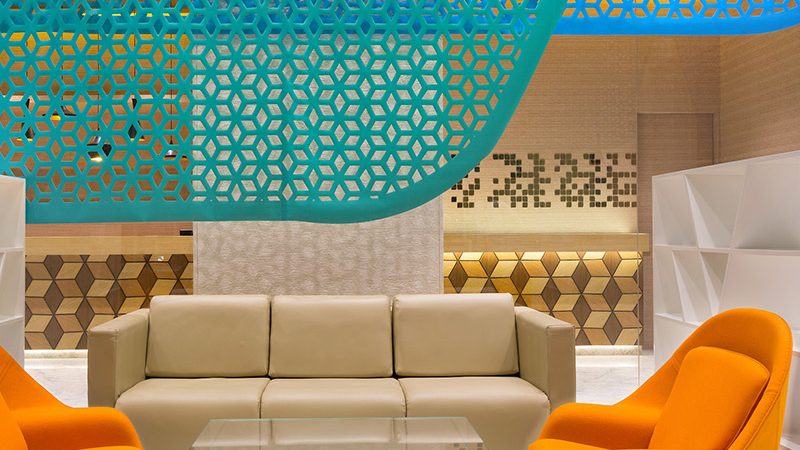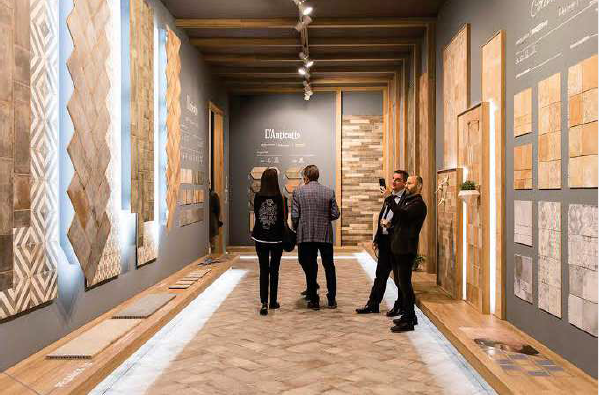The Duomo
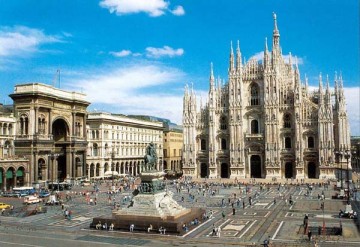
The Duomo is deeply rooted in the portion of urban land which, starting from the 3rd century A.D., formed the Christian religious center of Milan, Italy developing on top of ancient basilicas and baptisteries.
The Duomo, in addition to being an artistic monument, is a privileged place of prayer. The cathedral is closely bound to the memory and the Magisterium of Bishops, who succeeded Saint Ambrose on the bishop’s throne, and to the history of millions of devotees who gather here each year to celebrate the Sacred Mysteries.
The Cathedral is the Mother Church of the Die Duomoocese, which holds a symbolic function of exemplarity as to the life of worship in the city and in relation to the activities of the Diocese.
The liturgical activity is the true soul of the Cathedral: the Duomo is the heart of the liturgical tradition which, reminiscent of the figure of Saint Ambrose, is a manifestation of the concrete form with which the apostolic tradition has taken root and developed over the centuries in the Church of Milan.
In the Duomo, daily liturgical prayer is experienced in the multiplicity of its expressions: not just the celebration of the Eucharist, but also, thanks to the constant presence of the Metropolitan Chapter, the Liturgy of the Hours, as preparation for and prolongation of the Eucharist.
The liturgical prayer of the devotees is the soul of the Cathedral which, in all its representations, above all through the countless works of art that it has been preserving for centuries, is called to live and bear witness to the loyalty to the Gospel of Christ, in the very heart of the city.
1. Architecture in the Duomo
The Duomo is a unique monument in the vast scenery of Gothic cathedrals. Gothic architecture originated in France. The first example of the organic and rational use of separate structural Gothic elements in a new decorative and static system, signs of which could already be seen in the churches dating back to the period of Romanesque maturity, is the reconstruction (ca. 1140) of the abbey church of Saint Denis, commissioned by the Abbot Suger.
Soon, the Gothic cathedral building sites of Ile-de-France spread throughout France, Germany and Bohemia and later to England and Spain. In Italy, Gothic developed in the central regions almost one century later, mainly in Tuscany and Umbria, but with more balanced structural features and with a decorative display of the subjects that was less dramatic and less redundant in its expressive forms.
In the second half of 1387, Prince Gian Galeazzo Visconti decided to personally oversee the project, in order to affirm the political prestige of his Signoria in Europe, making the Duomo the universally recognized status symbol of his rule. He therefore established the Veneranda Fabbrica to design and erect the Cathedral, which was to be built like the solemn and inspired grand churches that rose in the capitals and major cities of the stable and flourishing kingdoms and princedoms beyond the Alps. The new typology required the use of a different material: marble, which Gian Galeazzo guaranteed the supply of by placing the quarries of Candoglia at the Fabbrica’s disposal.
For the Duomo site, these were the decades of greatest splendor. It became the place where different European cultures blended together, in a lively space of exchange of different ideas, experiences and manual abilities expressed by workers coming from the regions whose boundaries were marked by the Pyrenees and the Carpathians.
During those years, the European labor force experienced the massive immigration of thousands of workers from north to south in order to give their contribution to the construction of the Milanese cathedral, which for this reason can be considered the most European among all Gothic cathedrals.
The Façade
When it came time to finalize the Duomo’s structure and formal definition, the architects surely did not neglect the façade, whose design was still very far from what was in the process of being built. For many years, the façade of the basilica di Santa Maria Maggiore was used as a temporary solution, which the new cathedral would have progressively replaced by demolishing it as work progressed. When St. Carlo arrived in Milan (1565), the construction of the Duomo had reached the fifth span and the nave was still closed by the façade of Santa Maria Maggiore. There is no evidence of a drawing by Pellegrino Pellegrini during the episcopacy of Carlo Borromeo, even if the matter of the cathedral façade had surely been outlined by the archbishop during his meetings with his trusted architect. 1590 marked the beginning of the “Roman-style” season, expression of a classical architectural language which, in adherence with the choices of Carlo Borromeo, underlined the loyalty of the Ambrosian Church to the Apostolic See in a time when Protestant pressure at the borders of the Milanese diocese was very strong. However, at the same time, it contradicted the principle of “conformity with Gothic,” which the Fabbrica had always consistently honored.
The completion of the façade dates back to the years of the Kingdom of Italy during the Napoleonic era and is owed to the initiative of Napoleon Bonaparte himself. The king’s wish, expressed at the eve of his coronation and in the decree of June 1805, introduced to the project Amati-Zanoja who, with the aim of preserving the architectural structures that had already been built – the pillars that line the façade dividing it into five sections, the main and side portals, and the four windows of the upper order – placed upon them a typically Lombard gabled crown, corresponding to the decreasing course of the inner arches.
Three large ogival windows were then inserted in the three central sections together with a passageway featuring suspended arches that dip near the sloping brim of the roof. Presented on January 1st, 1807, the project became operational. Works were completed in 1813. The current façade, fruit of the eclectic mixture of many projects, underwent further work with the modification of the embrasure, which completed it in 1932.
The Spires
The profile of the Duomo, which can be seen silhouetting against the background of the city – even from far – becoming its essential symbol, features one hundred and thirty-five spires.
The spire is a typical element of Gothic architecture, especially ecclesiastical, for the immediate and inspiring charge of spirituality that it transmits as it soars toward the sky. It was conceived not so much as embellishment but rather as an element participating in the static structure of the architectural whole. In fact, with virtually non-existent axial weight on the perimetric buttresses, the spire weighs on the latter above the point where the cross vaults meet, thus contributing to containing the horizontal thrusts that would tend to divaricate the bearing structures.
With this function in mind, spires were initially modest in height, quite thick – at times more similar to a turret or small belfry – and compact, and with a sturdy section. It was only at the end of the 12th century that static and decorative effects were combined. With time, it took on soaring lines becoming pointed and elaborately decorated, with the addition of niches, pediments and small pyramids and, at times, statues.
Only the Duomo of Milan features such a large number of spires: one hundred and thirty-five. They are featured not only along the perimetric buttresses, but also atop each internal vertical bearing structure (pillars) and on the entire dome, where with an elegant game of static balance, they form a crown around the main spire, the one that supports the Madonnina.
The spires are rich with ornaments and statues of every size – of which there are more than 1,800 – niches and openwork, giving it a particular plastic effect that increases with the variable vibration of light-and-shade. Most of the spires are 17 meters tall. However, there are shorter ones, such as those rising from the four pillars of the dome.
Sculpturs in the Duomo
Like all Gothic cathedrals, since the very beginning the Duomo of Milan has been designed to convey, with its architecture and decorative elements, the message of Christian salvation.
In the vast scenario of the Duomo’s architecture, sculpture has always had a particular function and is extremely important. It is divided into ornamental sculpture, high-reliefs and full-relief figurative carvings.
The statuary (consisting of 3,400 statues and more than 700 figures inserted in the marble alto-relievo) that embellishes the capitals, the vaults, the marble face, the façade, the large windows and the 135 spires, symbolizes the image of Heaven. Here, patriarchs and prophets, martyrs and saints portray our eternal destiny as people delivered from sin by the Sacrifice of the Cross, guided by the Virgin Mary, who rises above the highest point of the temple.
The statue collection is not only a distinguishing feature of the Duomo but also a record: it has in fact been added to incessantly for six centuries and is the only continuous evidence of sculptural activity at a cathedral site that has uninterruptedly, year after year, produced statues in keeping with the cultural atmosphere of each historical period.
Sculpture in the Duomo must be regarded as the main sign of the varied production of Middle-European masters who arrived in Milan during the first fifty years of existence of the Fabbrica and worked together with local carvers in order to contribute to the construction of the church. For this reason, this Cathedral is the most complete and significant showcase of seven centuries of Lombard sculpture.
The sculptors, however, had to resort to many devices when challenged with such a majestic building. In particular, the necessity to view the cathedral from below had to be kept in mind. This required the masters to emphasize the proportions of the different parts of each piece of work, increase or decrease the volume and plasticity of the forms, and adapt the bodies and their postures. During the post-war period, many sculptures, especially the most important, were moved to the Duomo Museum, where they can be better admired and are organized according to a highly picturesque sequence.
Ornamental Sculptures
This term identifies all the sculptural works of various shapes and sizes that complement the Duomo’s many architectural and structural elements, and constitute its aesthetic integration and perfection, thus contributing to the Cathedral’s characteristic and distinctive appearance.
The words “ornamental” and “decorations” are used for linguistic simplicity: when we speak of the Duomo of Milan, each sculptural expression contributes to the whole of the Cathedral, the worldly image of the New Jerusalem.
Kilometers of modeled and carved ribbing along with countless leafy and molded profiles accentuate the vertical structures, thus emphasizing their upward and lightness effect.
The outer perimeter, the terraces and the 135 spires are adorned with thousands and thousands of ornaments, each different from the other. Among them are over eight hundred trefoil corbels crowning the Duomo’s wainscots, consoles and canopies for statues, large cages, flat and rampant embrasures with their abundance of parapets, miniature pyramids, knots and foliage, and flying buttresses, while the spires feature a multitude of pediments, falcons, rosettes, and niches.
The richness of the interior decorations centers on the extremely high and original capitals that top the large cluster pillars, the immense 16th century altars and the monumental presbytery, where sculpture is expressed in many ways, materials and techniques.
The History of Stained-Glass Windows
This art, which originated in the regions of France and Germany at the end of the first millennium, spread following the gradual reconstruction of the church of Saint Denis by the Abbot Suger. By allowing light – the symbol of God – to shine through the large colored windows decorated with figures and illuminate the faces of the devotees gathered inside the church with the story of the revelation, Suger gave life to a new structural scheme, creating a distinct architectural typology to which the success of Gothic style is owed. This change led to the replacement of the continuous stone wall, which marked the boundary of the abbey church, with a “wall of light” consisting of vast windows opened between sturdy buttresses aligned with the inner pillars. The art of stained-glass making continued to develop in the three centuries that followed, leading up to the triumphs of Chartres, Notre Dame, Sainte Chapelle in Paris and many other French cathedrals, spreading along the Rhine. It then reached Italy through Germany and Switzerland in the 13th century and arrived in Lombardy only at the end of the 14th century.
In Gothic cathedrals, catechesis was delivered not only through preaching but also by way of sculpture and, above all, large illustrated windows, which replaced the function of wall paintings. Stained-glass windows became the ideal means for passing the main themes of Christian Revelation on to the believers, with its theological principles and the models of life represented by the stories of the Virgin and Saints. By telling a story, the illustrated window thus became a true Biblia Pauperum – a pauper’s Bible – thanks to its ease of reading, its appeal and the colored lighting.
The Duomo’s First Stained-Glass Windows
At the Duomo site, the art of stained-glass went hand in hand with the story of its construction. In fact, while work was being carried out on the northern sacristy, the matter of closing the windows with stained-glass panes arose. And so, in 1404, windows were commissioned to a group of mostly Lombard painters. Supervision of the execution of sample stained-glass windows was entrusted to a Lombard painter of the time, Michelino da Besozzo.
Stained-Glass Making Techniques
A stained-glass window must be seen as a composition of variously colored body-tinted glass tesserae. The tesserae are assembled and arranged on top of an under-painting that is either outlined or shaded using a grayish-brown siliceous mixture, a technique known as grisaille or brunaille. The design is then permanently bonded onto the glass medium by way of kiln-firing at temperatures ranging between 450° and 600° C.
The tesserae are later joined together according to the original drawing using lead profiles to form a rectangular or mixtilinear panel that is usually set in a metal frame for stiffening and support. The frame is then fitted in the large window and is usually externally protected by special netting or, if more dependable conservation is required, protective glass.
The Illustrated Stained-Glass Window
In northern-European Gothic cathedrals, in addition to preaching, the announcement of the word of God and the teaching of the life of the Virgin and Saints was visually left to statues and, above all, to the art of illustrated stained-glass windows. This was a true innovation in which the bishops recognized a new pastoral tool for conveying to believers, through the fascination of color and light, the main themes of Christian revelation and, with them, its fundamental theological principles.
In northern-European Gothic cathedrals, in addition to preaching, the announcement of the word of God and the teaching of the life of the Virgin and Saints was visually left to statues and, above all, to the art of illustrated stained-glass windows. This was a true innovation in which the bishops recognized a new pastoral tool for conveying to believers, through the fascination of color and light, the main themes of Christian revelation and, with them, its fundamental theological principles.
The magic of the stained-glass window, which had already been sporadically used in Proto-Romanesque and Romanesque architecture, though poor in chromatic registers, is at the basis of the insightful change brought about by the Abbot Suger of Saint Denis, the church of the kings of France. It is thanks to the perception of the Benedictine monk that we owe an array of static solutions resulting from the reconstruction of his abbey. Clustered columns, buttresses and rampant arches, which until then had been small in size and used only occasionally in Romanesque churches, were, for the first time, organically inserted in the vast spatial system created by ogival arches with the purpose of forming their bearing frame. This was the beginning of a new structural system that produced the bold and imaginative architectural style that brought fame to Gothic cathedrals in the three centuries that followed.
The Restoration of Illustrated Stained-Glass Windows
Glass is a solid featuring a structure similar to liquid (unstable liquid) that degrades over the centuries due to the presence of water (rain, fog and humidity). Among the most severe reasons for decay one must also consider the effects of anthropic action (fine dusts, polluting and aggressive gases, acid rain, traffic vibrations, etc.), natural causes (vibrations and leaching produced by wind, rain, fog and earthquakes) and the installation of flora consisting of fungi, lichen and mosses and bacterial colonies.
Before embarking upon restoration, it is necessary to be familiar with the overall context described above. This includes carrying out specific chemico-physical tests as well as attaining broad knowledge as to the origin of the glass panes, the period of execution, the maker – or shop – that produced them, indications provided by the various essayists of the time, and any changes in location or restoration they may have undergone. Also, one must not neglect the history of the building containing the stained-glass window and its microclimate, the material it is made of and the condition of the opening to which the pane must return.














